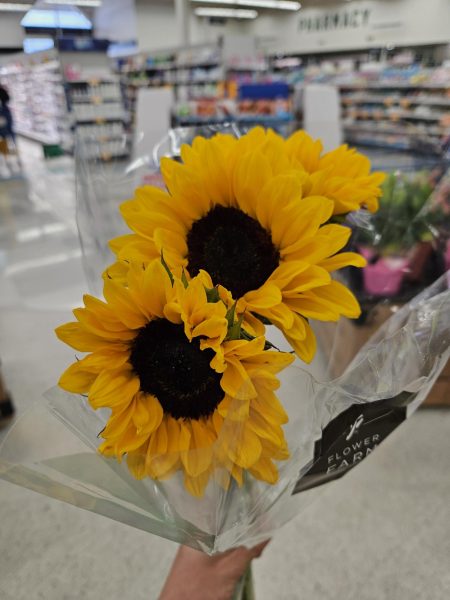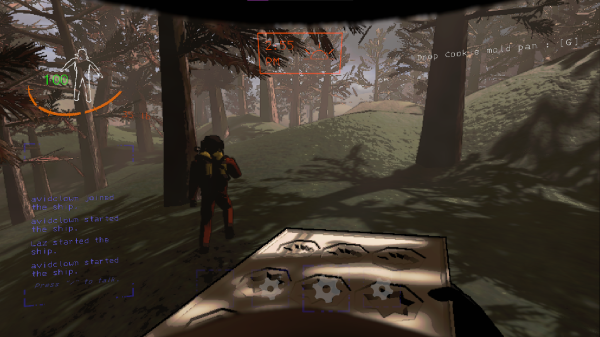Fur Farm Frights
February 25, 2022
Luxurious fur coats, fancy shoe toppers, or mink lashes. All of these are fashion products, but at what cost? Each year one hundred million animals are killed on fur farms, only to make unnecessary articles of clothing that can easily be replaced with cruelty-free options. Innocent mink, playful foxes, fluffy bunnies, and even loving dogs are murdered. Unfortunately, a weasel from the Mustelid family is the leading victim.
Mink are large “fur-bearing” carnivores that are native all around the world, including Indiana. They are curious animals with intelligence that outsmarts even dogs and cats. They are semi-aquatic and enjoy swimming in the water, purely for fun. Mink are loving creatures when shown love back, but are often labeled as “mean” or “evil” due to their eating habits. Mustelids have to be diligent and aggressive to take down large prey.
Mink are mistreated at fur farms and are taught to react negatively to humans. Mink are also obligate carnivores that hunt nearly daily, making them always on edge for an attack. Despite these behaviors, some farm “escapees” become some of the sweetest animals.
Many fur farms such as “Matrix Farms” claim to “ethically” slaughter mink for fur accessories. The farms’ idea of “cruelty-free” killing is by keeping solitary mink in 2 ft by 1ft by 1 ft cages, with wire bottoms and zero enriching items, which is shown on their YouTube channel. Not only is the active animal kept in a cage it can barely move in, they are given no water for swimming, no litter pan, and not even a water bottle. Their feces pile up under them, attracting bugs and maggots of all kinds. Due to the unsanitary environment, infection is a normal occurrence.
The physical conditions aren’t even the worst part. Mink are driven to insanity due to being kept in small enclosures. Mink pace, scream, scratch, and even cause self-inflicted wounds. Many mink bite and claw at the bars of their cages to the point of bloody paws, and broken teeth. When a mink has injured itself, they are often “discarded” by having their neck snapped, or being left to die. None of the mink are given medical attention because it simply is not worth it to save a mink that is going to be killed anyway. If a mink has a wound that is fixable but has damaged the fur, they are also “discarded.”
While daily life is devastating, the breeding season makes it even worse. Psychologically damaged and upset, male mink are shoved in tiny cages with females. Mink are completely solitary in the wild and are never put in trapped situations with other mink. When the males are put in cages with the females, they are scared and aggressive with each other due to unnatural circumstances, and males will often wound, or even kill the females. After all the males are placed with females, countless females are found in cages wounded or dead and are discarded. The females who are impregnated, suffer in the small cages until their babies are born.
The mink are fed a mush that is put on top of the cages. It lacks proper nutrients for the carnivore who should only eat meat. Nursing up to around 10 babies with insufficient nutrients leads to many mothers exhausting themselves to death. For the babies, as they grow, they are crowded in the small cage with their siblings. Siblings will fight due to being piled on top of each other. Baby mink found dead is a common occurrence.
At the end of the year when winter coats grow in, most of the mink farm population is gathered for slaughter. They are thrown in gas chambers where they hold their breath for around 10 minutes, trying to hide underneath each other to escape the gas. Catching the mink to gas them is a difficult task due to them being fearful for their lives, and “aggressive.” According to “Open Cages,” “Peta,” and many other undercover organizations, this leads to many of the employees roughly handling and abusing the min,. The mink are removed from the gas chamber and if they survive, their necks are snapped. Their corpses go to be skinned and the fur is made into expensive clothing.
Not only is fur farming extremely cruel to the animals, but it’s also poor for the environment. Waste runoff seeps into soil and waterways, causing damage to local ecosystems and killing wildlife. Toxins are used when dying or bleaching pelts and threaten the health of both the workers and consumers. Fur farms produce 10 times more environmental effects than faux fur creation. Greenhouse gasses, fossil fuels, and worst of all animal waste, are produced and used. Since mink are carnivores their feces is toxic, and cannot be used as a fertilizer. Mink digest food quickly and produce a very large amount of waste that pollutes the environment.
The obvious answer is fur farming needs to be banned. Previously leading fur farm countries such as Great Britain, Norway, the Netherlands, and soon Italy will ban fur farming with great success. The leading producers such as Poland and Denmark and the leading exporters such as the USA, Canada, and Russia, need to take the step forward as well.
People who want to take a step forward in helping mink or other fur-bearing animals can vote for political candidates who agree. Boycotting brands that use animal fur or mink lashes has proven to be very effective, causing lots of brands to discontinue the use of real fur. Donating to rescues that help fur-bearing animals such as “Mustelid Madness” or “Save a Fox” helps care for fur farm survivors. Humans who care can make a difference. The time to act is now.

